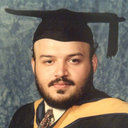Computational Docking Study of p7 Ion Channel from HCV Genotype 3 and Genotype 4 and Its Interaction with Natural Compounds.
Raktažodžiai
Santrauka
BACKGROUND
The current standard care therapy for hepatitis C virus (HCV) infection consists of two regimes, namely interferon-based and interferon-free treatments. The treatment through the combination of ribavirin and pegylated interferon is expensive, only mildly effective, and is associated with severe side effects. In 2011, two direct-acting antiviral (DAA) drugs, boceprevir and telaprevir, were licensed that have shown enhanced sustained virologic response (SVR) in phase III clinical trial, however, these interferon-free treatments are more sensitive to HCV genotype 1 infection. The variable nature of HCV, and the limited number of inhibitors developed thus aim in expanding the repertoire of available drug targets, resulting in targeting the virus assembly therapeutically.
OBJECTIVE
We conducted this study to predict the 3D structure of the p7 protein from the HCV genotypes 3 and 4. Approximately 63 amino acid residues encoded in HCV render this channel sensitive to inhibitors, making p7 a promising target for novel therapies. HCV p7 protein forms a small membrane known as viroporin, and is essential for effective self-assembly of large channels that conduct cation assembly and discharge infectious virion particles.
METHODS
In this study, we screened drugs and flavonoids known to disrupt translation and production of HCV proteins, targeted against the active site of p7 residues of HCV genotype 3 (GT3) (isolatek3a) and HCV genotype 4a (GT4) (isolateED43). Furthermore, we conducted a quantitative structure-activity relationship and docking interaction study.
RESULTS
The drug NB-DNJ formed the highest number of hydrogen bond interactions with both modeled p7 proteins with high interaction energy, followed by BIT225. A flavonoid screen demonstrated that Epigallocatechin gallate (EGCG), nobiletin, and quercetin, have more binding modes in GT3 than in GT4. Thus, the predicted p7 protein molecule of HCV from GT3 and GT4 provides a general avenue to target structure-based antiviral compounds.
CONCLUSIONS
We hypothesize that the inhibitors of viral p7 identified in this screen may be a new class of potent agents, but further confirmation in vitro and in vivo is essential. This structure-guided drug design for both GT3 and GT4 can lead to the identification of drug-like natural compounds, confirming p7 as a new target in the rapidly increasing era of HCV.




